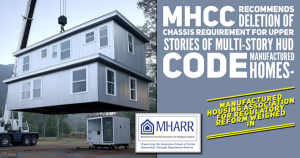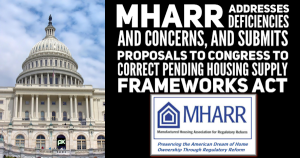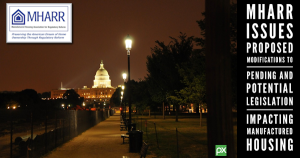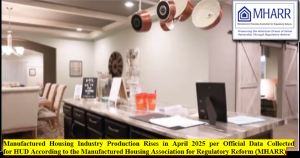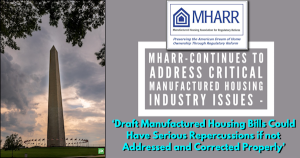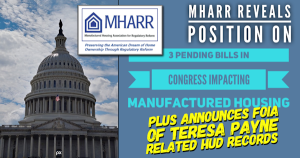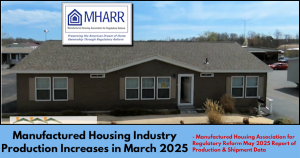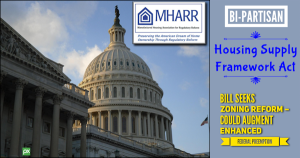[vc_row][vc_column][vc_column_text]Washington, D.C., February 4, 2019 – The Manufactured Housing Association for Regulatory Reform (MHARR) reports that according to official statistics compiled on behalf of the U.S. Department of Housing and Urban Development (HUD), HUD Code manufactured home production declined again in December 2018. Just-released statistics indicate that HUD Code manufacturers produced 5,943 homes in December 2018, a nearly 18% decline from the 7,245 new HUD Code homes produced during December 2017. On a cumulative basis, then, industry production for 2018 totaled 96,555 homes, a 3.9% increase over the 92,902 HUD Code homes produced in 2017.
Annual HUD Code industry production totals for the past ten years – from 2009 to 2018 – are thus:
- 2009 – 49,683 homes
- 2010 – 50,056 homes
- 2011 – 51,618 homes
- 2012 – 54,881 homes
- 2013 – 60,228 homes
- 2014 – 64,334 homes
- 2015 – 70,544 homes
- 2016 – 81,136 homes
- 2017 – 92,902 homes
- 2018 – 96,555 homes
While the four-consecutive-month decline in industry production that began in September 2018, as previously noted by MHARR, is disconcerting, continuing strength in the broader economy, as well as the exceptional quality and value of today’s HUD Code manufactured homes, demonstrate – once again – that constraints on industry sales and production levels exist primarily, if not exclusively, within the post-production sector, as was detailed by MHARR in the January 2019 edition of “MHARR: Issues and Perspectives.” And, while those constraints, including exclusionary and discriminatory zoning and placement restrictions, as well as wholly inadequate consumer financing support from Fannie Mae, Freddie Mac and Ginnie Mae, are quite real and extremely damaging to both the industry and American consumers of affordable housing, the remedies for those constraints are also quite real and already in existence, in the form – among other things – of the “Duty to Serve Underserved Markets” (DTS) provision of the Housing and Economic Recovery Act of 2008 (HERA) and the enhanced federal preemption of the Manufactured Housing Improvement Act of 2000. In short, the industry and consumers do not need new laws. What is sorely needed, rather, is a willingness to aggressively advance and fully implement all aspects of these existing laws, instead of chasing after illusions – i.e., new laws that, even if enacted by a politically-divided Congress, would take still more years to implement.
MHARR, as a key proponent of both DTS and the enhanced preemption of the 2000 reform law, will continue to aggressively advance the full implementation of both provisions to remedy the post-production limitations that continue to be the primary obstacle to the ability of the industry to achieve its full potential for all families – at every rung of the economic ladder – seeking to achieve the American Dream of homeownership.
A further analysis of the official industry statistics shows that the top ten shipment states from the beginning of the industry production rebound in August 2011 through November 2018 — with cumulative, monthly, current year (2018) and prior year (2017) shipments per category as indicated — are:
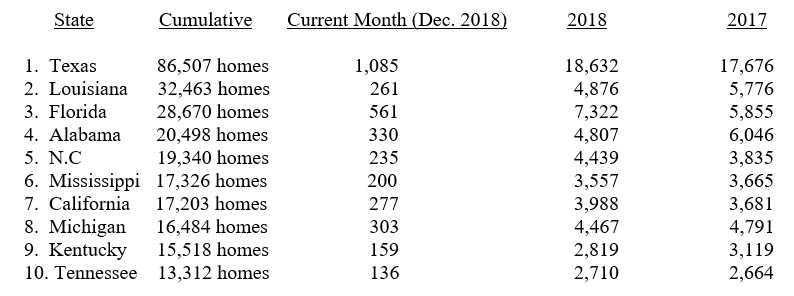 The latest information for December 2018, does not result in any changes to the cumulative top-ten list.
The latest information for December 2018, does not result in any changes to the cumulative top-ten list.
The Manufactured Housing Association for Regulatory Reform is a Washington, D.C.-based national trade association representing the views and interests of independent producers of federally-regulated manufactured housing.[/vc_column_text][/vc_column][/vc_row]




